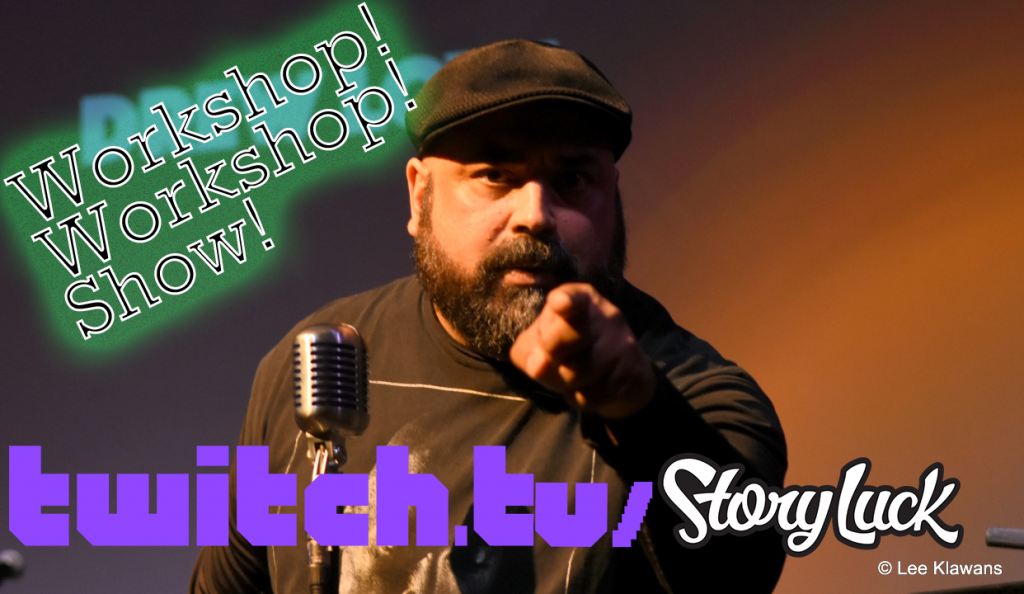These posts are adapted from the 20 minute lessons on story telling presented by Dan at the beginning of our Workshop! Workshop! show.
Monisha Pasupathi says, that around eight years old you start telling “good stories” and she thinks there’s these four things that need to be mastered, developmentally speaking, to be able to pull it off. (All links are affiliate links.) A guy named Jerome Bruner came up with the first two: “The landscape of action” and “the landscape of consciousness.” The third one is, “conveying order of time,” and the fourth one which usually comes a little bit later is, “Adding meaning to the story.”
“Landscape of action,” is just, “These things happened,” and you learn that well before you can order them in time. If you ask a very young child to tell you a story. It’s hard for them to put things in sequential order. Of course, what you find as you grow in narrative prowess is — that you can start changing the order but people still understand the chronology. They know what came first, what came last, they understand what was a flashback and what was a flashforward. That becomes a more robust technique of the art but it doesn’t start that way. At first people can’t tell what order the story happens.
This is a very early lesson in storytelling. Once you understand the rules, you can break them. First you learn the rule, “Stories must be told in sequence!” But as you grow in skill you learn the rule is actually more complicated, “Stories must be told so that listeners understand the order in which events happen.”
The Landscape of Consciousness, which is the second thing you pick up, is this idea of the sense of self and that it’s different and separate from the other. We mentioned the importance of the sense of self in a prior article. Developmentally, you now grasp the idea of consciousness of other people and you can go into them and that especially for western audiences is really important to us. The idea that there is an other, helps us define ourselves and how we are individuals. In Moth Style storytelling, people are always looking for the “you” in the story.
You hear this all the time: ”I want to hear about you – I am in my own head all the time. I want to hear what’s in your head. I want to know why, and when, you thought it. What did you think the other people were thinking? Did you ask them what they were thinking?” We want to know that inside track. We’re always in our own heads. We’re trying to figure out what we want, who we are, and how that’s defined.

Once you have that, you can start working on adding meaning to a story. Basically, you learn plot but out of order, then you learn characters, then you learn how to order plot, and finally, you learn theme. You learn to weave meaning into the elements you’d learned previously. This plot with these characters, in this order, means something. It isn’t just this happened and then this happened. By the time you’re eight, almost completely implicitly, you’ve discovered the full power of story.
If you want to talk more about Storytelling, check us out on Monday at the Workshop! Workshop!



